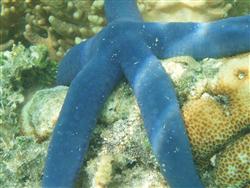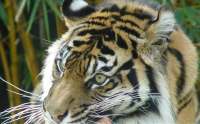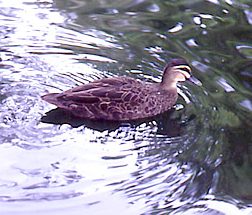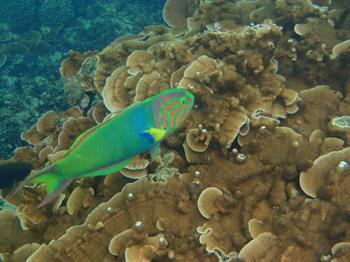Gain the skills to contribute positively to the wildlife management and conservation sector
This course is suitable for anyone wanting to work on a paid or volunteer basis within marine studies and wildlife management.
Work in -
- Zoos
- Wildlife rehabilitation
- Wildlife parks
- Safari parks
- Marine parks
- Journalism - writing about animals and/or environmental issues
- Research
- Teaching
- Ecotourism and so much more!
Choose from a wide range of electives.



COURSE STRUCTURE
Duration: 600 hours (six 100 hour modules). Note that each module can be studied as a standalone course.
To obtain the certificate you must successfully complete all assignments and pass an examination in the three core modules and three elective modules.
CORE MODULES (click on the course titles for more information)
1. Marine Studies I
2. Marine Studies II
3. Project Management
ELECTIVE MODULES - student choose three modules from the following:
Wildlife Conservation
Wildlife Management
Environmental Assessment
Ornithology
Earth Science
Statistics
Climatology
Primates
Herpetology
Other elective options may also be available. Contact our school by phone or email to speak about this further.
EXAMS
- A separate exam must be completed for each of the core and stream modules.
- Exams can be sat anywhere in the world.
- The enrolment fee does not include exam fees. An exam fee is paid prior to sitting each exam.

Core Module Content
Marine Studies I
- Marine Ecology Systems
- Shallow Waters & Reefs
- Shellfish & Crustaceans
- Squid, Octopus, and Other Primitive Animals
- Fish Part A
- Fish Part B
- Marine Mammals
- Turtles, Sea Snakes and Seabirds
- Human Impact on Marine Environments & Fishing
Marine Studies II
- Introduction and Simple Organisms (Protists, Sponges etc)
- Marine Plants
- Cnidarians and Worms:
- Arthropods
- Molluscs
- Echinoderms:
- Non Bony Fishes:
- Bony Fishes I
- Bony Fishes II
- Marine Mammals
Project Management
There are nine lessons as follows:
- Introduction
- Project Identification
- Project Planning
- Project Implementation
- Project Completion & Evaluation
- Technical Project Management Skills
- Leadership Skills
- Improving Key Personnel Skills
- Major Assignment
So Much to Learn!
Working with wildlife often starts with learning about the biology and behaviour of animals. Animals are more diverse than what you might realise in their anatomy, physiology and behavioural characteristics. Consider, for instance: did you know that fish can hibernate?
Hibernation refers to a suspended state of activity occurring in certain animals (endotherms) in order to conserve energy during periods when food is scarce. An animal may hibernate from a few days up to several months at a time, allowing a slow decrease in their body temperature by a gradual reduction of their metabolic rate. When hibernation occurs during warmer seasons, this state is generally referred to aestivation.
The duration and reason for hibernating is different for every animal:
Bears - save their energy over the winter months, relying more on changes in their heart and metabolic rate rather than in their own body temperature to go into a period of “winter sleep”. Bears have the ability to reuse their own urine internally and reabsorb the protein for a period of several months during this time. The black bear's heartbeat will drop from approximately 45 to 8 beats per minute during hibernation periods, which lasts anytime between 3 and 5 months.
Primates - some primates, such as lemurs, will hibernate depending on the temperature of their shelter. Fat-tailed dwarf lemurs hibernate during the coldest time of the year in well-insulated tree holes for a period of up to 7 months. During this time, they will live off the fat of their own tail (hence their name). They come out after this period to feed, until the next season.
Rodents - certain rodents follow a general hibernating routine, meaning that their body heat will decrease to equal the environmental temperature and will increase once their hibernating period is over. Marmots, for example, will hibernate for 8 months during which time their breathing reduces to as little as 3 breaths per minute, and their heartbeat decreases from 120 down to 4 beats per minute. The rest of the year (4 months) they spend their time reproducing, caring for their young and preparing for the next hibernating period.
Ectothermic animals (e.g. fish) - cannot deliberately regulate their body temperature or metabolism. Instead, they experience a style of hibernation called “dormancy”, where their metabolic rate decreases and they are able to survive for long periods in colder or hypoxic (very little oxygen) environments.
Birds - along with some mammals (e.g. marsupials, some mice, and some bats), birds experience a state of reduced metabolic rate and body temperature for a period not longer than 24 hours. This allows them to conserve energy and survive during periods when food is scarce. This type of hibernation is generally referred to as “daily torpor”, which can occur any time of the year - it is not seasonally dependant. The common poorwill (Phalaenoptilus nuttallii) is the only bird species that “hibernates”, with hibernation periods lasting up to 5 months.
Why Study with ACS?
Design your own learning pathway.
Study at your own pace, from anywhere, at any time.
Receive prompt, expert support from our team of committed and friendly tutors.
Your learning is our priority. We are flexible and adaptable to meet your educational needs!
Enrolling is easy - just go to the top of this page and select your study method and payment option.
If you have any questions about studying with ACS, or want to know more about any of our courses, get in touch with our specialist tutors today. They will be happy to answer your questions and look at different study options to fit in with your goals.